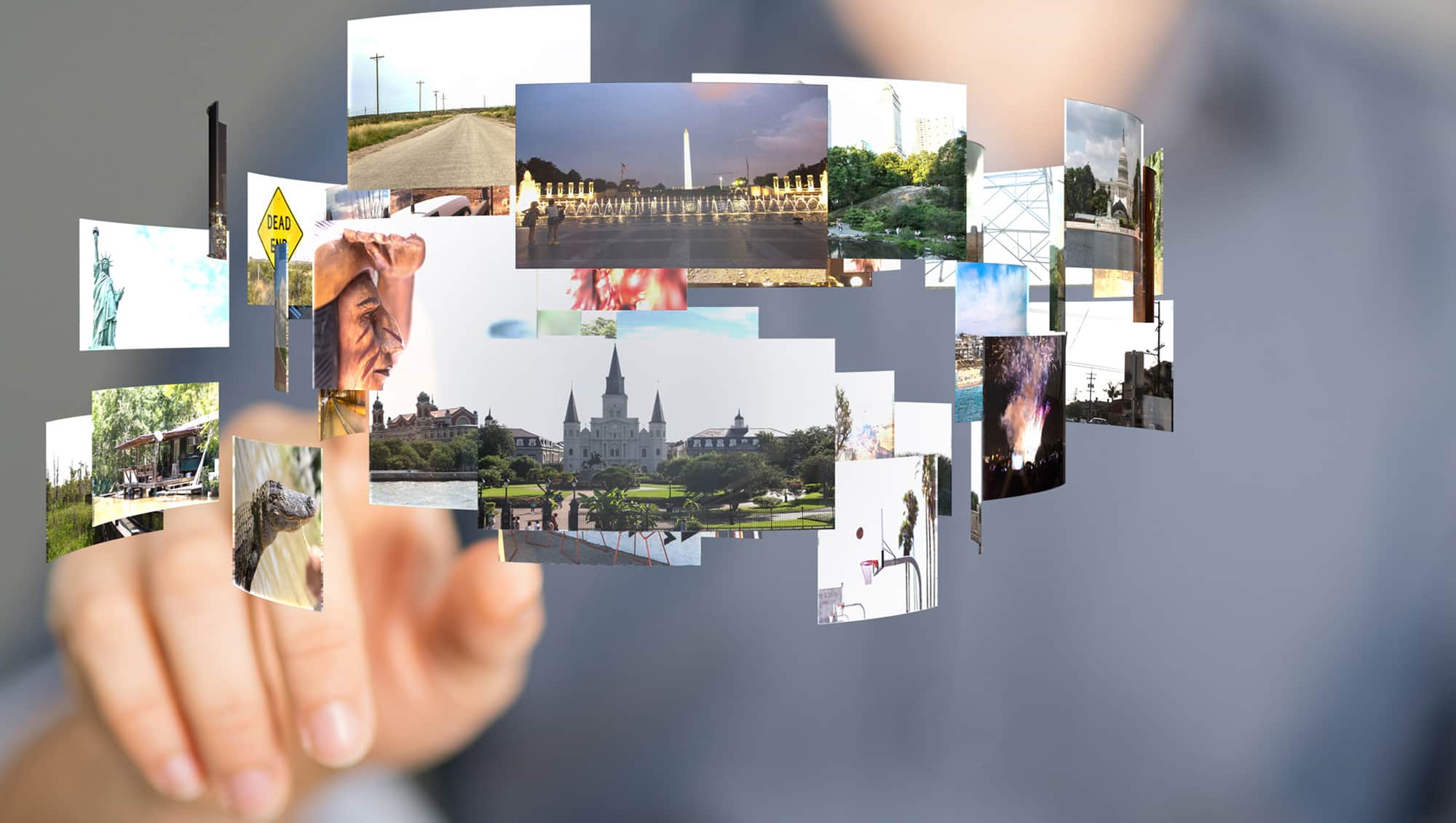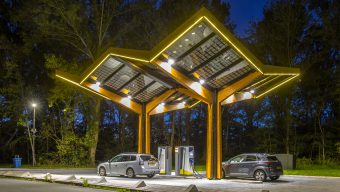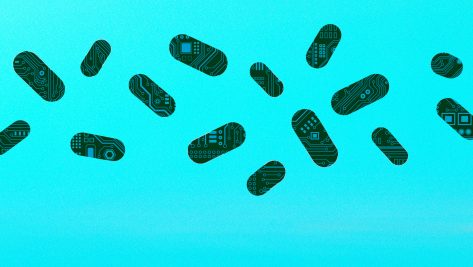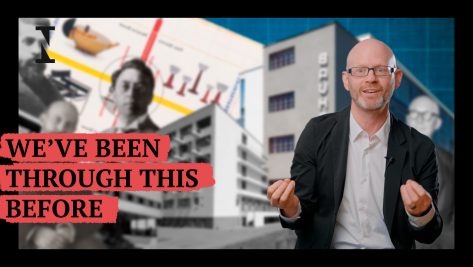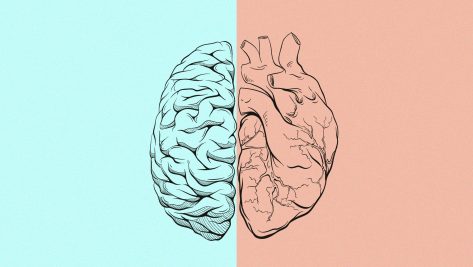Not all innovations are specifically sought; sometimes they arise in response to a problem or need. Sixty years ago, the manager of a busy hotel realized it was time for breakfast and none of the staff responsible for serving it had come to work. He decided to place a long table in the hall and lay out everything the guests needed to serve themselves; hence, the breakfast buffet was born. It may not have been a technological solution, but it was certainly an innovation.
In short, to be innovative, an action must mark a milestone, such as:
- Opening a new market.
- Creating a new product.
- Modifying an existing product.
- Improving a production method.
- Finding a new source of supply.
- Creating a new form of organization.
Technology: Transforming Jobs and Relations
We live in a time of transformation, a time of change in which many questions that once had simple answers have become difficult, even as other questions are arising for the first time. One question that is no longer simple is that of occupation. Myriad new positions have emerged in response to new jobs and ways of working: CMO, CEO, COO, CFO, etc. Soon we will have space debris managers, virtual habitat designers, biohackers, and even designers of human parts for 3D printing.
At a time when robotics and artificial intelligence are posing new challenges, it is also worth asking how many of the jobs today considered normal and necessary are likely to be automated or replaced by new technologies.
Not all innovations are specifically sought; sometimes they arise in response to a problem or need.
In the world of tourism, one issue that has been simplified is travelling itself. The sharing economy has given rise to platforms such as BlaBlaCar, which has undergone exponential growth in services, profits, and number of users. In this context, we need to consider how humans are evolving in the context of a society deeply impacted by technology and, at the same time, how we, the business world, and, consequently, markets all work.
One key to understanding this whole change is that technology permeates the reasoning and experiential part of the brain much more powerfully and markedly in the new generations. In the current era of digital evolution, generations understand their environment and the tourism experience differently: some people live in the moment, interacting with all five senses at an individual level, others share it with their close friends and family, and still others do all that and also share it on social media in real time.
This reality is increasingly present. Our thinking may be linear, but technology and the incorporation of these habits by younger generations are exponential. In a linear approach, if you take one step, you advance one yard; if you take two, you advance two yards; and so on successively until you have taken fifty steps and advanced fifty yards. Technology, on the other hand, presents us with a different reality: like Moore’s Law, it works exponentially. Thus, if you take one step, you advance one yard; if you take two steps, you advance two yards; but if you take a third step, you will travel twice the distance as in the previous step, that is, four yards. And so it goes: four steps, eight yards, etc. This exponential progress is clearly reflected in the time it has taken users to adopt different technologies (see Chart 1).
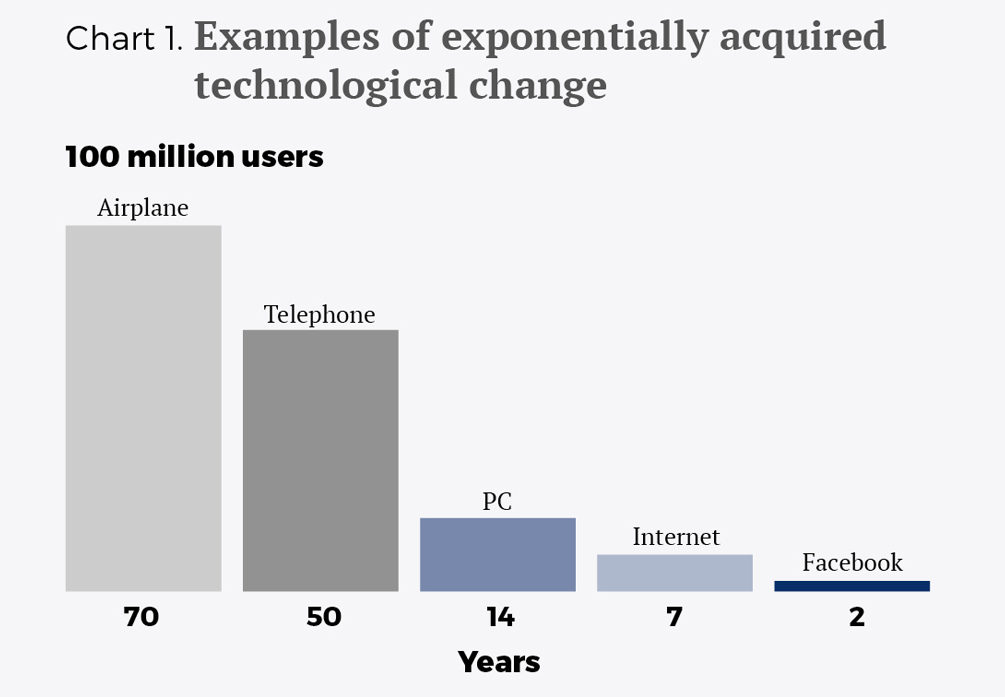
Machine Learning
Machine learning offers a new way of understanding business management. The huge data and information repository we have today, i.e., big data, allows us to intelligently predict what will happen tomorrow and to access that information. In other words, in addition to information based on the forecasts of our hotel or business’s computer system, we can access reliable information on what will happen in the future, the number of reservations that will be cancelled, the number of no shows we can expect, and other variables that will help us adequately meet our human resource needs, streamline management, and deliver a better service. It is a technology-based work methodology that uses past information to predict future events.
For the tourism industry, big data can be very interesting from a macro perspective, but it is less so at the micro level. While the macro approach can provide massive amounts of information with regard to aspects such as tourist flows, ultimately, we are talking about individual companies, which need functional information to help them make business decisions. Machine learning takes the massive information available today, polishes it, and uses it to predict the future and meet the company’s objectives. In the case of hotels, data are extracted from three sources: the property management system or PMS (hotel management software including a record of the last years of business), big data, and manual inputs, i.e., the data the receptionist, manager, or sales associate directly includes as key.
Machine learning takes the massive information available today, polishes it, and uses it to predict the future and meet the company’s objectives.
Wi-Fi Analytics and Geolocation Technology
Another factor that will undoubtedly have one of the largest impacts on the tourism experience is the rise of the Internet of Things and the digitalization of places.
The driving force behind this reality is currently smartphones. We have reached a point where, before leaving home, we check to make sure we have three things: our wallet, our house keys, and our phone. This shift in habits has opened up an interesting field of work in technology and innovation, giving rise to solutions such as positioning beacons and beacons that can be used to identify mobile phones and, thus, their owners with a certain ease. The next step is to use mobile apps to contact users at given points, thereby generating an interaction with a place, hotel, leisure area, city, museum, etc.
Thus, it is possible to determine how much time a customer will have to wait to be served or how many have left because of the wait. This information can then be used to reorganize and streamline management, increasing the return and improving the service. It will likewise be possible to monitor production processes in order to organize and distribute tasks more efficiently based on need. For instance, it will be possible to monitor a hotel cleaning process, so that it can be analyzed with the same precision as a factory production line, determining the actual cleaning times, flows, paths, and waste of the process, as you would with the Lean Management method.
Apps vs. Bots
In the current mobile environment, virtually all businesses seek to have their own app. Consequently, users often download apps only to delete them one or two days later. In light of this reality, it is important to consider why users should download a hotel’s app if they are only going to stay for a few nights. To make it worth their while, hotels should focus on value, seeking additional services that encourage guests to download their app and use it with some frequency, so as to establish a bond with the guest and generate a new way to increase guest loyalty.
However, in today’s fast-paced world, game changers can happen overnight, as when Facebook opened its Messenger platform to chatbots. Because such a large percentage of people have the Facebook app on their phone, the social network’s decision prompted many companies to develop intelligent information systems to deliver information to customers through these bots, allowing them to cover some of the services provided by many standalone apps developed especially for customers with considerably more agility. These chatbots, which imitate human behavior, are also more likely to be used because they work with the Facebook app, which customers already check daily.
Of course, whether to use a system based on an app or a bot depends on the type of business, the service being provided, and the type of customer a company is seeking to serve. Above all, it depends on the type of people who will be overseeing the activity of these types of applications. This, in turn, gives rise to new professions, new tasks and activities that will give rise to new jobs (see Chart 2).
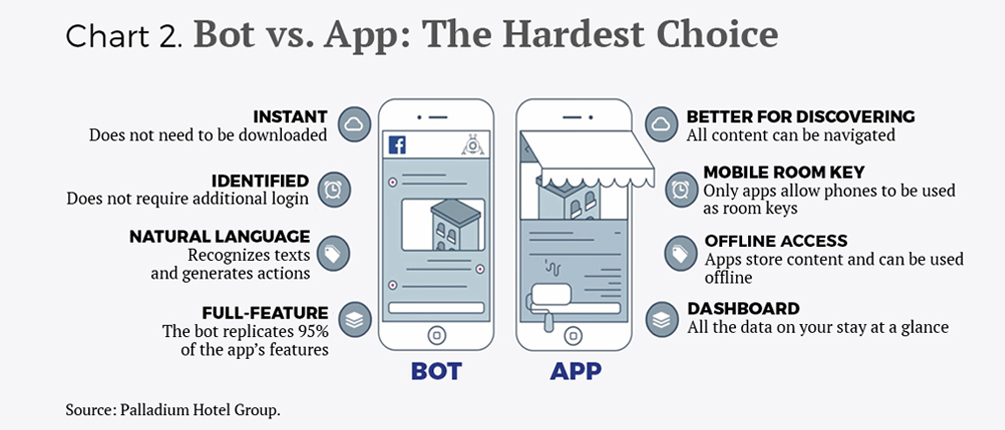
As a result of these realities, not only are products changing and improving, but markets and organizations are changing too. The mobile start-up generation is seeing exponential growth in users and revenue. The next step is the Internet of Things, which will surely usher in a disruptive change in how companies grow and develop. The Pentagrowth Report, by Ideas for Change, identified five laws of growth for these new companies:
- Connect: with people, situations, and things.
- Collect: the smaller the effort an organization has to make to build its available inventory, the bigger its growth potential.
- Empower: integrate users into the company’s business processes.
- Enable: develop tools that others can use in the company’s environment to create overall value.
- Share: to create a community loyal to the resource created by the company.
The next step is the Internet of Things, which will surely usher in a disruptive change in how companies grow and develop.
Companies grow in relation to these laws based on what might be called the generative principles of exponential growth: Reach, Interaction, and Resilience.
The Reach principle correlates the Share and Connect levers with user growth rates. The organization’s potential reach depends on the number of people, situations, and things connected through the networks on which it operates and the number of value units that users can freely share with others.
The Interaction principle is the result of the correlation between the Collect and Empower levers, i.e., the number of value units included in the inventory and the number of roles that users can play.
Finally, an organization’s Resilience depends on the number of business partners that have developed their commercial offerings and lifestyles based on its standards and market and the number of people who feel a sense of shared ownership of its open resources.
When we analyze these levers and principles in relation to some of the most disruptive companies in the tourism industry, such as Airbnb or Uber, we find that they owe their initial edge to their community, their exponential growth in terms of connected users. These users establish different roles by incorporating their own assets, such as their apartment or car, into the company’s centralized and intermediated offering. Thus, in addition to being users, they become sales associates, service managers, and influencers, all based on an enormous network undergoing exponential growth driven by user feedback.
© IE Insights.



